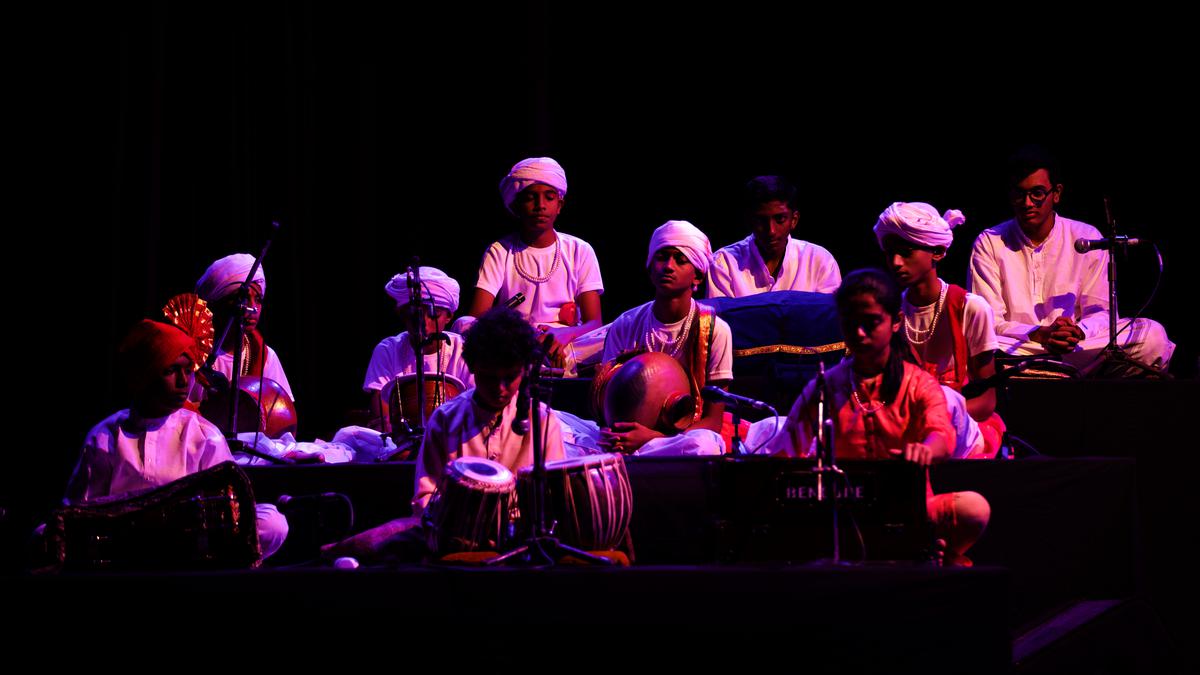
Young brigade to the fore at the Jackfruit Festival
The Hindu
A tasty bit of culture at the Jackfruit Festival
The stage was still not fully set for the evening’s show. The 37 children who were to participate had arrived with their various musical instruments, open-throated voices and wide-eyed curiosity. While the creative director of the show was calling the artiste manager telling him not to allow the children to tire themselves out, it was the adults who needed to watch out for exhaustion. Not for a moment did the little musicians show any signs of flagging energy.
’Kamaal Dhamaal’, directed by tabla exponent Aneesh Pradhan, featured conversations between drummers, dancers and some singers, all children under 17, from different parts of India. This was only one of the high-energy musical performances from Bhoomija Trust’s Jackfruit Festival. The other treat, ‘Singing into the Future,’ featured four child prodigies, who brought very different forms together in a show that had the audience enthralled from the very first note.
In its fifth edition (after a two-year pandemic induced break), the curator of this year’s Jackfruit Festival was well-known Hindustani singer Shubha Mudgal. Gayathri Krishna, Bhoomija’s managing trustee, describes how Shubha Mudgal’s “sensitive, meticulous and no-nonsense” approach drew out the festival’s unique flavour. “Even as the festival was being designed, she read out the rule book on how long children can be in rehearsal, how many breaks and chaperons would be needed and how they need to be treated,” says Gayathri.
“The fact that the Festival workshops were held in the Indian Music Experience Museum (IME) made them more special,” she says.
“Though the child artistes were from different backgrounds, traditions and social strata they were all given equal opportunities,” says Shubha Mudgal, adding that it was rewarding to see the camaraderie they developed that reflected on stage too. She observes that the young artistes learned to listen and even be inspired by each other. “I feel it is possible to do away with the many existing hierarchies in the arts when you bring together diverse styles and forms in the same performance, and present them all with the same respect and pride,” says Shubha.
The meticulous preparation and rehearsal resulted in two vibrant performances that wove together urban and rural, voice and instrument, classical and folk — to mention just a few categories that have divided our perception of music. Speaking about how he selected the drummers and forms to be showcased in ‘Kamaal Dhamaal’, Aneesh says he chose to work with music schools and artiste groups he had previously worked with, and some new ones too. He welcomes the possibility of expanding the stylistic and geographical scope of this percussion ensemble in future. Yet, Kamaal Dhamaal in its current form was a huge success going by how it demolished barriers of region, while holding the audience in its rhythmic embrace.
The singers from Bengal opened the evening with a conversation that didn’t miss a beat. The sound of the cymbals, tabla, kartaal and dholak set the start point on a high note. The technical prowess of the Rajasthani and Goan drummers was evident in the next pieces — not only by how they modulated the volume of the drums but also in how they shared space — playing two to a single drum.

National Press Day (November 16) was last week, and, as an entertainment journalist, I decided to base this column on a topic that is as personal as it is relevant — films on journalism and journalists. Journalism’s evolution has been depicted throughout the last 100-odd years thanks to pop culture, and the life and work of journalists have made for a wealth of memorable cinema.










